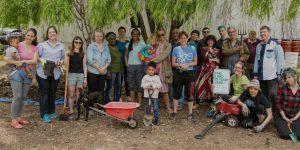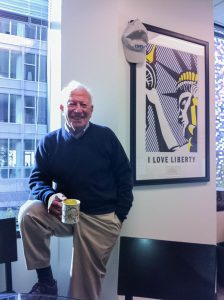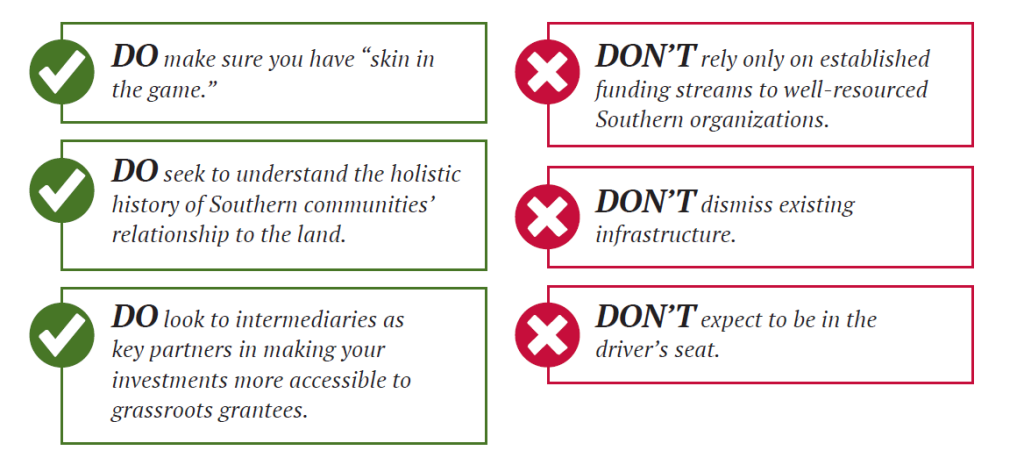To showcase our nonprofit members, NCRP invited them to submit their mission and a story of impact to be presented as a poster at last month’s 2017 Impact Awards reception in New Orleans. We received more stories than we had time to craft in poster format. So here we present all of them, in alphabetical order. From job creation to youth civic engagement to health equity organizing, NCRP’s members are making the world a better place!
1. Active Living By Design (ALBD) advances community-led action and proven, place-based strategies to ensure health and well-being for all. When New York communities were striving to improve food justice, ALBD facilitated collaborative learning and networking to showcase promising solutions. This motivated residents in Syracuse to become ambassadors for a local healthy eating campaign and improved food options. As part of the New York State Health Foundation and The New York Community Trust’s Healthy Neighborhoods Program, a multi-year initiative, ALBD guided these communities and seven others to advance equity, health and well-being. Since 2001, they’ve partnered with more than two dozen philanthropies to spark transformative changes like these in more than 200 diverse communities across the country.
2. Appalshop enlists the power of education, media, theater, music and other arts to document, disseminate and revitalize the lasting traditions and contemporary creativity of Appalachia. Appalshop creates art, music and media, by, for and with the too often unheard voices of the people of Appalachia, demonstrating the power of culture to advance meaningful social and economic change. The Letcher County Culture Hub, a recent addition to its programming, addresses issues of poverty and unemployment by networking more than 20 grassroots partner organizations. Appalshop’s investments in culture hub partners, totaling more than $50,000 since 2015, as well as continuing on the ground support, helped them create more than 20 new jobs in the face of an intimidating post-coal economy.
3. Caring Across Generations is a national movement of families, caregivers, people with disabilities and aging Americans working to transform the way we care in this country. Caring Across Generations has advocated for state and federal policies to support family caregivers. In July 2017, it achieved a major breakthrough with the signing of the Kupuna Caregiver Assistance Act in Hawai’i. This law, the first of its kind in the nation, provides up to $70 per day to working family caregivers, most of whom are women, to secure care for their aging loved ones without compromising their own jobs or retirement security. While congressional attacks on Medicaid currently threaten older Americans’ ability to age at home, Hawai’i is revolutionizing care solutions to reflect what today’s families need.
4. Family Youth Counseling Agency provides affordable and professional support through programs and services dedicated to advocacy, counseling and education for the people of Southwest Louisiana. FYCA and its divisions, the Children and Families Action Network (CFAN) and The Leadership Center for Youth (TLC), engage high-school youth in the democratic process, helping them understand how they can influence their legislators and create systematic change in their communities. In 2016, 168 youth in Southwest Louisiana became voices for issues in their communities, and, in 2015, seven youth discussed their concerns related to the Juvenile Justice and Delinquency Prevention Act and the Victims of Child Abuse Act to Louisiana congress members in Washington D.C., advocating on behalf of youth in Louisiana.
5. The mission of Georgia Appleseed is to increase justice in Georgia through law and policy reform and community engagement. Georgia Appleseed’s “Keeping Kids in Class Toolkit” and its associated “Find My School’s Suspension Rate” database, including data from the past 10 years – easily disaggregated by race, gender and disability – has become an extremely popular resource in the state. Advocates (parents, members of the education community, juvenile judges) can use the data to start a discussion addressing disproportionality in school discipline. Consistent with Georgia Appleseed’s efforts to reduce out-of-school suspensions (OSS) in public schools, and since the Toolkit’s inception, state OSS rates have steadily decreased annually. The 2006 state average was 9.5 percent. The 2015 rate has dropped to 6.5 percent.
6. Justice in Aging is a national organization that uses the power of law to fight senior poverty by securing access to affordable health care, economic security and the courts for older adults with limited resources. Economically vulnerable seniors need assistance connecting to programs and services that can deliver quality health care and basic income supports. Within these programs, we work to bridge gaps and fight discrimination, connecting the low-income older adults most in need to the programs, services and supports they rely on. Since 1972 they’ve focused our efforts primarily on populations that have traditionally lacked legal protection such as women, people of color, LGBTQ individuals and people with limited English proficiency. Through our three-prong strategy of advocacy, education and high-impact litigation, Justice in Aging has returned more than $2.5 billion in benefits for low-income seniors over the last 10 years alone.
7. Midwest Academy builds capacity for the progressive movement through training and consulting, including with the Kansas Health Foundation, which seeks to improve the health of all Kansans. Midwest Academy and the Kansas Health Foundation partnered over the past three years to develop the capacity of KHF grantees and partners to engage in effective advocacy to build the social safety net in Kansas. Many agencies believed they could not fight back against drastic legislative cuts to social service and health programs. Midwest Academy conducted nearly a dozen training sessions across the state, with leaders from over 70 organizations attending. As a result, the grassroots organizing capacity of Kansas nonprofits has been built and strengthened, leading to policy changes and a dramatic increase in the presence of grassroots voices in Kansas.
8. The Mississippi Low-Income Child Care Initiative (MLICCI) works with childcare providers, parents and community leaders to aid low-income working single moms who need affordable childcare and support the providers serving them. Since 1998, MLICCI has fought to increase investment in our state’s childcare assistance program so more eligible children can be served and more low-income working single moms can afford to work. Last year, they concentrated our advocacy efforts towards pressing for more Temporary Assistance for Needy Families (TANF) funds. They met with state agency officials. They rallied parents, child care providers and lawmakers. They released a special report on TANF detailing dismal spending trends and offered recommendations for improvement. These efforts resulted in the state moving $8 million more TANF dollars into child care assistance.
9. MN350 organizes to make Minnesota a leader in the movement to a clean energy economy and to be a model of an inclusive volunteer-led climate justice organization. They work to keep fossil fuels in the ground, and help create a just transition to 100 percent renewable energy for all. In April 2017, U.S. Bank became the first major bank in the United States to formally exclude gas and oil pipelines from their project financing. This groundbreaking change came after ongoing pressure on U.S. Bank locally from MN350 and from the Minnesotans for a Fair Economy coalition, and on banks nationally from indigenous, climate and labor groups. Local actions included letter-writing, account closures, marches, protests, testimony at shareholders meetings and social media campaigns. This new policy is an important step in protecting the environment and indigenous rights, sending a strong message to the fossil fuel industry and moving towards a clean energy economy.
10. PASOs is a community-based organization of community health workers that are addressing the needs of the growing Latino population in South Carolina. Its mission is to help build a stronger South Carolina by supporting Latino communities with education, advocacy and leadership development. They accomplish this by approaching community health as a holistic state of complete physical, mental and social well-being which, more than medicine, requires prevention, advocacy and support. PASOs understands that achieving the greatest positive impact must come at the systemic level. Through innovative partnerships with universities, researchers and partner organizations, PASOs aims for change on multiple levels. Recently, PASOs community health workers served as bridge building assets to conduct research concerning contraceptive use and access in their communities. Recruiting community members, conducting focus groups, interviews and analyzing data will provide useful and pertinent information. This allows for the lived experiences of individuals to inform the solutions directly affecting their livelihoods. This partnership allows for the voices of community members to move upward into decision-making arenas.
11. The mission of the South Carolina Community Loan Fund is to advance equitable access to capital by providing loans, technical assistance and advocacy for affordable housing, healthy food, community facilities and community business enterprises. The fund works to transform underserved communities by providing capital and technical assistance for healthy food enterprises. Germaine Jenkins of Fresh Future Farm (FFF) won its Feeding Innovation challenge with her plan to increase food access in a North Charleston community that had been without a grocery store for more than 11 years. Germaine says Feeding Innovation was about more than the seed capital award; the program helped her solidify her business plan and attract additional funding for the project. Just three years later, FFF is a bustling urban farm and market that provides fresh produce, jobs and education to neighborhood residents.
Follow , , , , , , , , and on Twitter.
Header photo courtesy of SEIU: Justice in Aging Senior Staff Attorney Amber Christ at an Emergency Health Care Town Hall for Seniors in San Diego.






 7.
7. 

 4.
4.


